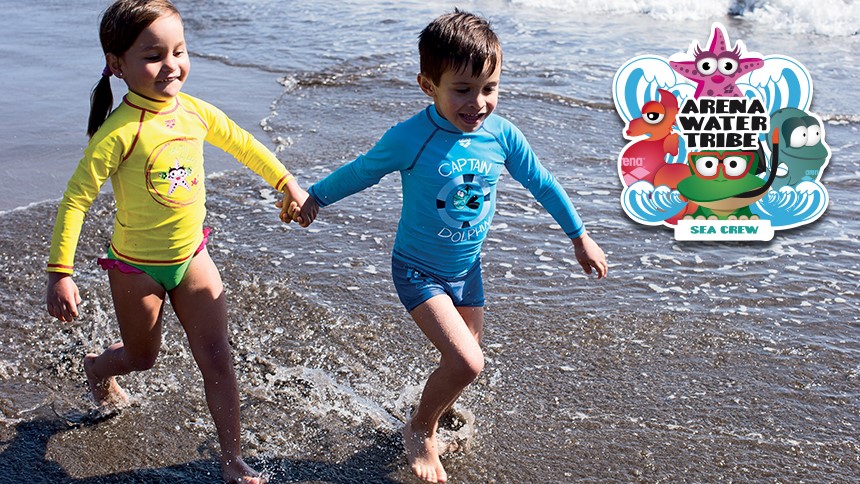As beach season gets underway, many parents are concerned about protecting their children from the harmful effects of the sun’s UV rays. Sun is the best source of vitamin D, and it’s also good for the spirits (plus, it makes life on earth possible!), so it’s certainly not a bad thing, but a day at the beach can easily lead to more sun exposure than is healthy. Following are a few tips on keeping your children safe in the sun.
Sunscreen
Sunscreen is the first defence. In choosing a sunscreen for children, look for one labelled “broad spectrum”, meaning that it protects against both UVA and UVB rays (UVA causes accelerated skin aging, UVB causes burning, and both contribute to skin cancer). Usually this means a combination of chemicals that absorb the UV rays and minerals that physically deflect them. If your children have sensitive skin, choose a sunscreen that is hypoallergenic and fragrance-free.
At the beach, where the sun’s rays also reflect off the water, you’ll want sunscreen with an SPF (sun protection factor) of at least 30 for your children. The SPF measures the length of time the sunscreen will protect the skin from the sun’s burning (UVB) rays compared to how long the skin would take to burn without sunscreen. So in theory, if your child’s skin would normally sunburn after 10 minutes without sunscreen, SPF 30 sunscreen would lengthen that time to 300 minutes. In real life, though, most people don’t use the quantity required to achieve this level of protection, so be sure to apply sunscreen generously. It also needs to be reapplied approximately every two hours, or after swimming, even if you use water-resistant sunscreen.
Sun protection clothing
If constantly reapplying sunscreen to your children’s entire bodies is unappealing, sun protection clothing can cover much of their skin while still allowing full freedom of movement and fun in the water.
The Arena Water Tribe collection of beachwear for mini swimmers features a variety of items with 50+ UPF (ultraviolet protection factor) that you can mix and match to meet your children’s needs. From one-piece girls’ swimsuits to jammers and long- and short-sleeved shirts for both girls and boys, these pieces are made from soft and quick-drying Waterfeel X-Life fabric in kid-friendly designs, with a comfortable, snug fit so there’s no sliding around.
Similar to the SPF rating for sunscreen, the UPF rating for clothing measures the fabric’s ability to block UV rays. A UPF rating of 50 means that approximately 98 per cent of UV radiation is blocked.
Hats can play an important protective role as well, covering the scalp and shading the face and eyes. Broad-brimmed hats (as opposed to baseball caps) protect the back of the neck and ears too.
Sunglasses
Children’s eyes also need to be protected from the sun, as young eyes are particularly susceptible to damage, and UV exposure can burn corneas or lead to cataracts and other eye problems later in life. Find some child-sized sunglasses with 100 per cent UVA and UVB protection, and use cords to keep the glasses from getting knocked off and lost or stepped on. If your child already wears prescription eyeglasses and you don’t want to invest in prescription sunglasses as well, clip-on UV lenses are a good alternative.
Additional precautions
Remember that the sun’s rays are strongest between 11 a.m. and 3 p.m., so try to minimize the time your children spend in the sun during those hours.
Babies under six months of age have thinner skin and underdeveloped melanin, and they should be kept in the shade at all times. Use a beach umbrella or pop-up tent, as sunscreens are not recommended for infants.
If your children are taking any medications or over-the-counter drugs, double-check to make sure than none of them cause increased sun sensitivity. If they do, you’ll need to take additional protective measures.
Set a good example by following sun safety practices yourself. If you model the behaviour you want to see in your children, they are more likely to develop good habits that will help protect them for years to come.
Do you have any additional sun safety tips for children? (Or any lessons learned the hard way…?)
—————
